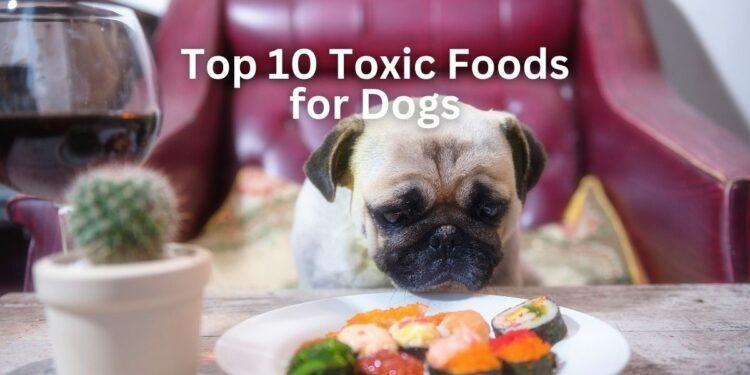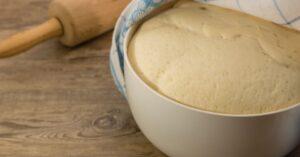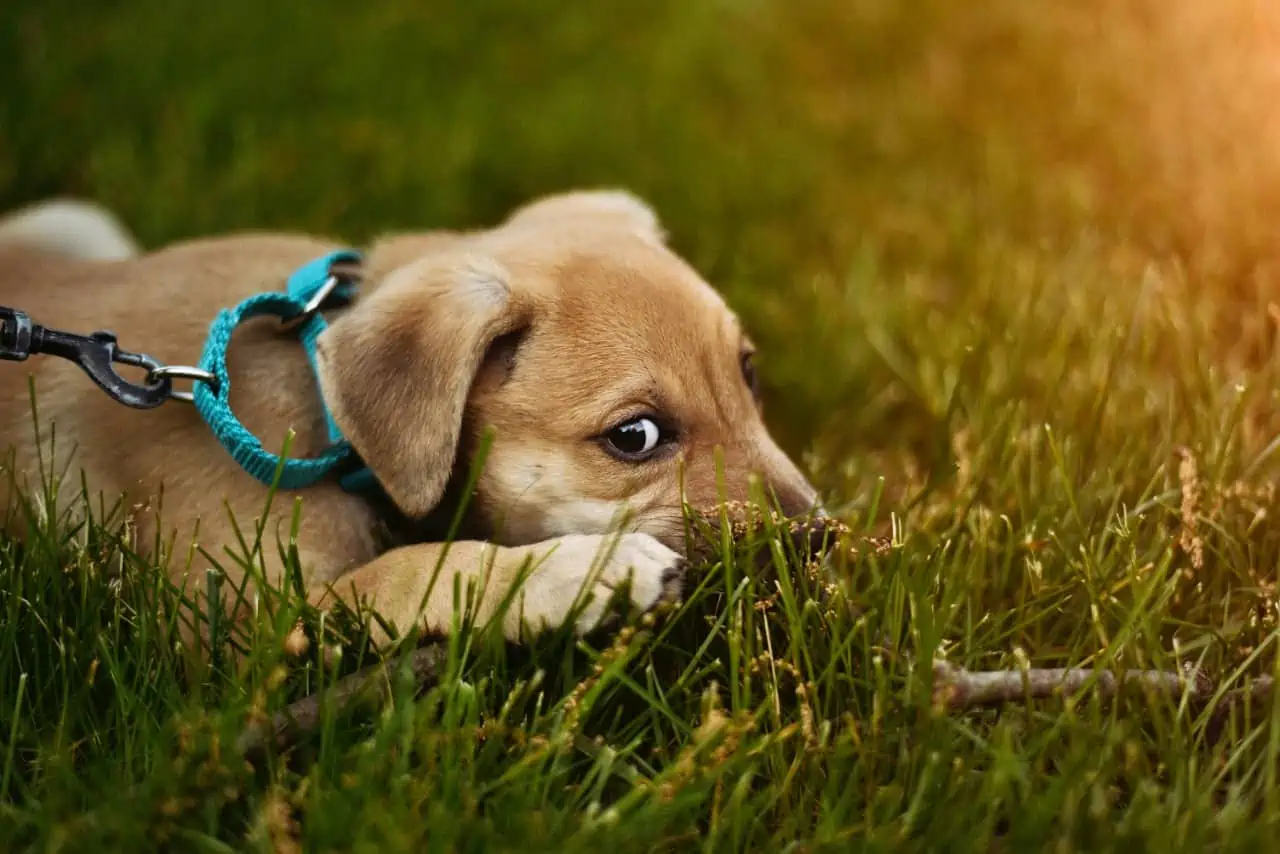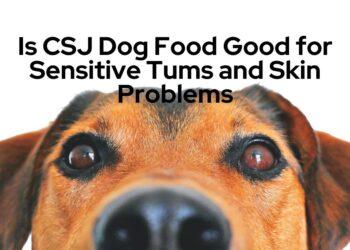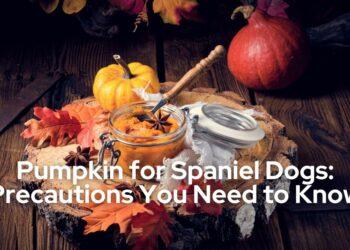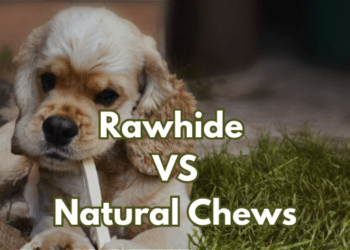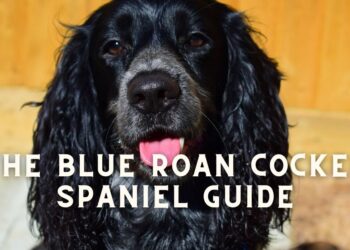Dogs absolutely love food. And this is something every pawrent can agree on. However, not everything that counts as a food to humans is safe for canine consumption. Some are really toxic for their little bodies and hence should never be administered to them.
I personally learned this lesson after a very devastating situation and so thought of sharing my personal experience about the top 10 toxic foods for dogs through this blog. So, let’s start.
Table of Contents
Top 10 Toxic Foods for Dogs
Before we start, it is to be noted that this blog consists of only the top 10 toxic foods for dogs out of all food types. Therefore, if you are planning to introduce a new food item to your dog, make sure to consult with your vet prior to administration. This way you can better plan out your pooch’s feeding type without risking their safety.
The top 10 toxic foods for dogs include: onion and garlic, grapes and raisins, chocolate, macadamia nuts, caffeine, fat trimmings and cooked/raw bones, xylitol, yeast dough, alcohol, fruit pits and seeds.
Onion and Garlic
Coming first in the list of top 10 toxic foods for dogs, onion and garlic are hands down the most harmful of all. No matter if they are dry, cooked, semi-cooked they should never be administered to pups of any age and under no circumstance.
This is because even the tiniest of pieces can cause huge impacts on their body, such as severe gastroenteritis, red blood cell damage, trouble in breathing, etc. These signs could be either instant or start showing slowly and therefore preventing your canine from even accidentally swallowing a tiny onion or garlic piece is every pet parent’s sole responsibility.
And this is why I cook all their dishes separately. Rather than putting onion and garlic for taste, I prefer putting carrots, pumpkin, beans and peas which not only adds taste to their food but also makes it more nutritious and creamy.
Grapes and Raisins
Even though grapes and raisins may seem harmless at the first instance, believe me they can be pretty lethal to your canine. Once my youngest pup got access to a few raisins in my absence which he gulped greedily, only to be later taken to the emergency vet care.
Although he was back to health fast, the entire time he suffered was a nightmare for both him and me. He was very lethargic, didn’t want to go outside, and was vomiting profusely. Even with a single sip of water he was throwing up everywhere, and therefore with my personal experience I can say that grapes and raisins are an absolute disaster for canines.
Chocolate
A very enticing food item, chocolate is a favourite for all, both humans and their canines. However, regardless of how innocent eyes your pup may show you when you are having one of these delish, it is highly necessary to stop yourself from falling into the trap.
According to many studies, chocolate has been found to be highly deteriorating for a canine’s stomach. This sweet harmless looking treat contains huge amounts of theobromine that is a slow poison for dogs. Consuming this causes the pup’s neural system to crash, resulting in severe tremors, abnormal heartbeat, violent seizures, vomiting, and even death.
Therefore, instead of chocolate I often offer canine-safe peanut butter to both my pups. They absolutely love munching down anything dipped in this tasty dish without having to suffer from any consequences.
Macadamia Nuts
Macadamia nuts makes it to the fourth most dangerous food item in my list of the top 10 toxic foods for dogs. Known to be a great source of fibre for humans, consumption of these nuts can have variable effects on the canine, all devastating in nature.
The variation preferably depends on your canine’s size, amount of nuts consumed and existing health conditions. For instance, in larger breeds like my Bruno, the Lab, one or two macadamia nuts might not show as serious side-effects as that in my Spitz-mix, Viku. However, this doesn’t mean that larger breeds would be okay with its administration.
If consumed, the dog will show extremely painful and uncontrollable muscle twitching, tremors, weakness in their limbs and loss of coordination. In extreme cases, the pup may even fall unconscious, have swollen limbs and body, requiring emergency vet care.
Caffeine
Just like the smell of chocolates, dogs go crazy upon having a whip of your morning brew. Isn’t it???
But, it is important to remember that caffeine is never a good option for canines. They don’t need the jumpstart that caffeine has to offer and hence should never be exposed to any of these products. Administration of these drinks can easily cause caffeine poisoning in these little fur balls which can further lead to rapid breathing, increased heart rate, restlessness, vomiting, muscle tremors, and so much more.
Fat Trimmings and Cooked/Raw Bones
Even though dogs will happily lick off any meat leftovers from our plates, it is better to not let them do so. The meat we humans have is often filled with huge amounts of fat trimmings that is highly dangerous for a canine.
These fat trimmings upon ingestion, keep on accumulating in their little bodies, not only increasing the risks of obesity but also leading to canine pancreatitis. This slow but fatal condition then eventually causes their overall health to degrade, making them prey to a plethora of health conditions.
The same also goes for raw, semi-cooked and cooked bones. In case the dog doesn’t chew the contents properly, the broken splinters of the bone could pose a choking hazard. They might get caught up in the dog’s throat or food pipe, causing regurgitation and other painful consequences.
This is why I usually prefer boneless meat pieces for my dogs that also have been carefully fat trimmed. You can also try the same and let me know how that works out for your little Fido.
Xylitol
Even though peanut butter is a safe alternative to chocolates for dogs, be very aware of xylitol. This is an artificial sweetener that is often added to peanut butter to enhance their test. And while it does leave a sweet aftertaste, for canines xylitol arrives with high fatality risks.
When consumed, the components cause an instant dip in their neural functioning and a sudden increase in insulin circulation. This in turn leads to a serious drop in their blood sugar level, causing the pup to suffer from severe health side-effects. For instance, the dog may start drooling or panting heavily, throw up, have runny diarrhoea, exhibit signs of loss of muscle coordination, etc. Furthermore, these side effects may also lead to permanent liver failure, thereby shortening their lifespan by many years.
Hence, to prevent such instances, it is highly advised to be very careful when picking up peanut butter for your canines. I usually go for peanut butter that are marked and approved by vets, doesn’t consist of xylitol and is grain-free. This way I don’t have to worry about my little ones’ safety and they can also enjoy their tasty treat.
Similarly, other items that you need to be careful about consisting xylitol include candies, toothpaste, diet food, and gums. So, the next time you have these items with you, be sure to keep them away from your pet’s reach.
Yeast Dough
Dogs love cookies. But if there is something that they truly adore is the dough that goes into the oven to prepare the final result. There is something about this soft tasty batter that drives our puppies bonkers and very eager to try them out.
But one thing that many pawrents don’t know is that dough consists of yeast. Thus when a canine ingests the dough when it’s raw, the batter starts swelling within the stomach, causing immense pain. A dog’s digestive system isn’t designed to digest yeast and therefore the longer it stays within their system, the greater the side effects.
Another risk of yeast dough consumption in canines is the risk of fermentation. The yeast starts fermenting the batter into alcohol, which is the next harmful item in our list of top 10 toxic foods for dogs.
Alcohol
Recently I came across an Instagram reel where an adult dog had accidentally licked off his owner’s alcoholic beverage from his wine glass. Although the whole comment section was filled with laughing emojis and funny dialogues, I was profusely frustrated and worried about the pup’s well being.
Alcohol is not something that must be ever administered to our canine friends. While it may intoxicate the dog, letting him/her do Instagram worthy silly actions, there are far more worse side effects than this. For instance, the dog may start vomiting extensively, lose consciousness, have trouble breathing, fall into a coma, suffer from extremely violent seizures, or worse end up losing its life.
These side effects are no joke, and hence must never be trifled with if you don’t want to jeopardise your canine’s health permanently. Also the smaller the dog, the greater the risks.
Fruit Pits and Seeds
Finally, we have fruit pits and seeds that are quite harmful when it comes to administration in canines. This is because, apart from causing obstruction in their digestive tract, fruit pits and seeds have huge amounts of cyanide in them. And like we have discussed previously, cyanide ingestion is like a slowly ticking time bomb. That means while the effects may not be instant, it surely can impact the pooch’s wellbeing in the long run.
This includes kidney and liver failure, vomiting, gastrointestinal issues, lethargy, skin allergies, etc. Moreover, when not treated at the right time, it may also lead to further worsening of their condition, ultimately resulting in death.
What should I do if my dog has consumed any of these toxic foods?
Never Panic
Some pups can be extremely sneaky. And thus if you suspect that your canine has ingested any of the items mentioned in the list of top 10 toxic foods for dogs, then the first rule to follow is to never panic.
Dogs are extremely intelligent creatures, that means they can sense your panic through your body language. So if you start pacing around, it is very likely that your furry friend will also get all excited and snappy. This in turn can fasten the consequences of the toxic food within their body, given the rise in adrenaline and increased blood pressure.
Therefore, in such cases it is better to calm yourself, keep the dog as still as possible, and immediately go to the vet’s clinic.
Monitor the Dog’s Actions
The next thing to follow is to monitor the pup’s actions closely until he/she is checked by a professional vet. Many times it is the initial symptoms that help the veterinarian diagnose and treat the issue immediately, rather than having to wait for the symptoms to appear or to start a general course of the treatment.
This includes checking the canine’s body language, muscle behaviour, eye, ear and tail positionings, and also other telltale signs and symptoms. Based upon these very signs, the course of treatment is decided, leading to faster and more efficient recovery of the pup.
Follow the Treatment Procedure as directed
Finally, it is highly necessary for pawrents to always follow through the whole treatment and recovery process. This includes taking medications, making vet appointments and getting the pooch thoroughly checked by the professional as directed.
Without this, the pup won’t be able to make a full recovery and may even end up with life-long health issues. Similarly it is also very important to keep the pup away from any such toxic foods to prevent such situations from arising again.
So, this was all about the top 10 toxic foods for dogs that every pawrent should avoid based on my personal research and experience. If you too have such food items that you want us to cover next time, make sure to mention the same in the comment section below.
You may also like:
Bringing a Puppy Home in a Car without Crate
If you are a dog lover then, Subscribe to our weekly newsletters. No Spams!
